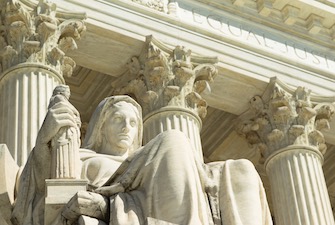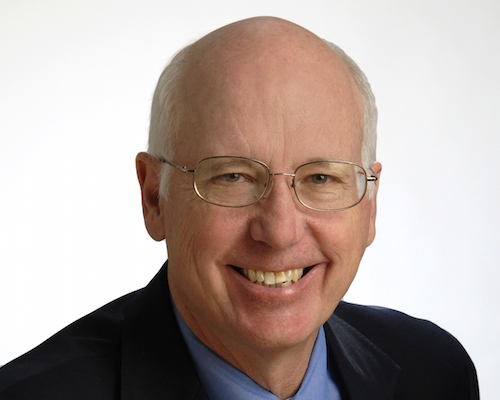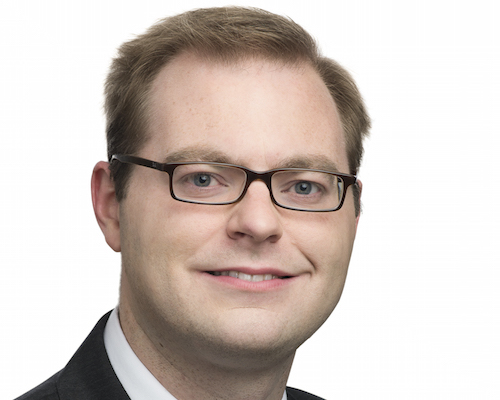 Since the start of the Supreme Court’s term in October, the Court has already agreed to hear two patent cases, Halo Electronics, Inc. v. Pulse Electronics, Inc. and Stryker Corp. v. Zimmer, Inc. Both cases address the issue of willful infringement and when it is appropriate for a court to award enhanced damages under 35 U.S.C. § 284. The only question that remains is whether the Court will continue its recent trend of taking three or more patent cases a term, or whether it will revert to its longer term average of accepting only one to two patent cases. Against the wider backdrop of the Supreme Court’s shrinking merits docket, it is notable that patent law consistently draws the attention of the Court under Chief Justice Roberts. Here we take a look at four cert petitions raising patent law issues, and handicap the odds of being granted.
Since the start of the Supreme Court’s term in October, the Court has already agreed to hear two patent cases, Halo Electronics, Inc. v. Pulse Electronics, Inc. and Stryker Corp. v. Zimmer, Inc. Both cases address the issue of willful infringement and when it is appropriate for a court to award enhanced damages under 35 U.S.C. § 284. The only question that remains is whether the Court will continue its recent trend of taking three or more patent cases a term, or whether it will revert to its longer term average of accepting only one to two patent cases. Against the wider backdrop of the Supreme Court’s shrinking merits docket, it is notable that patent law consistently draws the attention of the Court under Chief Justice Roberts. Here we take a look at four cert petitions raising patent law issues, and handicap the odds of being granted.
The types of patent cases that the Supreme Court traditionally seems the most interested in tend to fall in two categories. In the first category are cases where there is an opportunity to reign in ever-expanding patent rights. In the past, these cases have involved patent exhaustion, the doctrine of equivalents, claim construction, subject-matter eligibility, and the extraterritorial reach of patent rights. In the second category of cases, the Supreme Court ensures that general legal principles are uniformly applied in the context of patent law. Because patent law is a purely a creature of statute, it is not surprising that these cases frequently involve principles of statutory construction. Microsoft v. i4i (statutory presumption of invalidity) and Octane Fitness v. Icon Health & Fitness (statutory award of fees in exceptional cases) are examples where the Supreme Court’s decision turned on general principles of statutory construction. eBay v. MercExchange is a prominent example of a case where the Court reiterated that general legal principles apply equally to patent law. With this background in mind, we turn to four pending petitions.
Life Technologies Corporation v. Promega Corporation presents two interesting issues concerning the scope of liability for induced infringement under 35 U.S.C. § 271(f)(1). The petitioner seeks reversal of the Federal Circuit’s finding that the statutory term “actively induce” simply means “cause.” Based upon that statutory construction, the Federal Circuit held that a single entity can “actively induce” itself to infringe a patent, which certainly broadens the statute. The petitioner also argues that the Federal Circuit failed to narrowly construe the statutory term “a substantial portion of the components of a patent invention” in a way that minimizes the extraterritorial reach of U.S. patent law. The petitioner argues that the Federal Circuit failed to apply the Supreme Court’s directive in Microsoft v. AT&T to narrowly construe § 271(f) to avoid extraterritorial application of the statute. This petition stands a good chance of being the second granted given that it raises the topics of statutory construction and extraterritoriality that have traditionally interested the Court. The Court is clearly interested in this petition because it recently invited the Solicitor General of the United States to weigh in on the dispute. This one has a better than 50% chance of being granted if the Supreme Court accepts another patent appeal.
[Supreme-Court]
Many practitioners would like to see the Court take up Cuozzo Speed Technologies, LLC v. Lee, Inc. because it would answer important questions about the inter partes review proceedings created by the America Invents Act. The petitioner/patent owner argues that, during an inter partes review, claims terms should be given their plain and ordinary meaning (the standard used in litigation) instead of their broadest reasonable interpretation (the standard used during patent prosecution). The petitioner also takes issue with not being permitted to challenge the PTAB’s decision to institute an inter partes review on appeal. Of the issues presented, the claim construction issue appears to be ripe for resolution by the Supreme Court because there are indications of a split among the judges of the Federal Circuit. However, given that inter partes review is just over three years old and Congress is actively considering AIA reforms to address the very issues raised by Cuozzo, it seems likely that the Supreme Court will deny the petition to allow Congress and the courts more time to work through the implications of the AIA.
Next, Fivetech Technology Inc. v. Southco, Inc. presents the issue of whether the Federal Circuit has, in some cases, set too high of a bar for using intrinsic evidence to limit the plain and ordinary meaning of claim terms. The petitioner suggests that the Federal Circuit requires that there must be evidence in the specification of a lexicography or an explicit disavowal of claim scope to justify narrowing a claim term, and alleges this flies in the face of Supreme Court precedent requiring that a claim term be given a meaning that comports with the patent as a whole. It seems unlikely that the Supreme Court will wade into this particular issue because there is not much evidence that courts are routinely failing to give intrinsic evidence its appropriate weight in claim construction. Although the Federal Circuit at times has characterized its disavowal standard as “exacting,” it seems to be more of an admonition to district judges to not routinely limit claim terms by importing unclaimed elements from the specification, which would run afoul of the competing axiom that the claim language should be given primacy in defining the metes and bounds of a patent.
Finally, Chunghwa Picture Tubes, Ltd. v. Eidos Display, LLC is the other pending petition that raises a claim construction issue. Chunghwa argues that the Federal Circuit has improperly created an exception to the rule recognized in this year’s Teva Pharmaceuticals USA, Inc. v. Sandoz, Inc. decision handed down by the Supreme Court that requires the Federal Circuit to review a district court’s factual findings underpinning a claim construction using the deferential clear error standard of review, as opposed to the de novo standard of review. Legal conclusions remain subject to de novo review. The Federal Circuit justified applying the de novo standard because the indefiniteness inquiry was a mixed question of law and fact. The respondent argues that the Federal Circuit’s decision did not turn on any disputed factual findings, and that Chunghwa had earlier conceded that indefiniteness is purely a matter of law, which tends suggests this is not a good candidate for Supreme Court review.
Thus, of the currently pending petitions, Life Technologies Corporation v. Promega Corporation appears to have the best chance of being granted. If the Court is inclined to accept additional patent cases this term, petitions that have not been filed yet still have a chance of being heard.

![[IPWatchdog Logo]](https://ipwatchdog.com/wp-content/themes/IPWatchdog%20-%202023/assets/images/temp/logo-small@2x.png)


![[Advertisement]](https://ipwatchdog.com/wp-content/uploads/2024/04/Patent-Litigation-Masters-2024-sidebar-early-bird-ends-Apr-21-last-chance-700x500-1.jpg)

![[Advertisement]](https://ipwatchdog.com/wp-content/uploads/2021/12/WEBINAR-336-x-280-px.png)
![[Advertisement]](https://ipwatchdog.com/wp-content/uploads/2021/12/2021-Patent-Practice-on-Demand-recorded-Feb-2021-336-x-280.jpg)
![[Advertisement]](https://ipwatchdog.com/wp-content/uploads/2021/12/Ad-4-The-Invent-Patent-System™.png)







Join the Discussion
3 comments so far.
Edward Heller
November 16, 2015 08:37 amPaul, according to the Federal Circuit opinion, Cuozzo’s complaint was the PTAB’s construction of “integrally attached” was too narrow in that it did not include a disclosed embodiment. In re Cuozzo Speed Technologies, LLC, 778 F. 3d 1271, 1283 (Fed. Cir. 2015). I am at a loss as to the basis for their complaint about the claim construction standard when they themselves are seeking a broader construction.
Paul F. Morgan
November 14, 2015 10:45 amGood article!
I agree with Ned that Cuozzo Speed Technologies may not even have “case or controversy” standing since the difference in claim construction in issue here would not change this case outcome in their favor? I did not even see that argued in their cert petition. Is this being used as a vehicle by others to try to get an advisory opinion?
Edward Heller
November 13, 2015 01:27 pmRegarding Cuozzo, while I strongly agree that broadest reasonable interpretation should not apply to issued patents because I believe such a tool of examination for the very purpose that claims be clarified with amendments. Applying a liberal construction to issued patents is designed not to clarify claims by forcing clarifying amendments. Rather it is tool of invalidation.
But the problem I have with Cuozzo is that has never been clarified, to me at least, exactly how the outcome of that case depends upon the construction of any particular claim term and how that claim term was construed one way under BRI and another way under traditional court construction. Without that, I don’t know how the Supreme Court can decide an “academic issue.” There really is no there, there — no case and controversy.